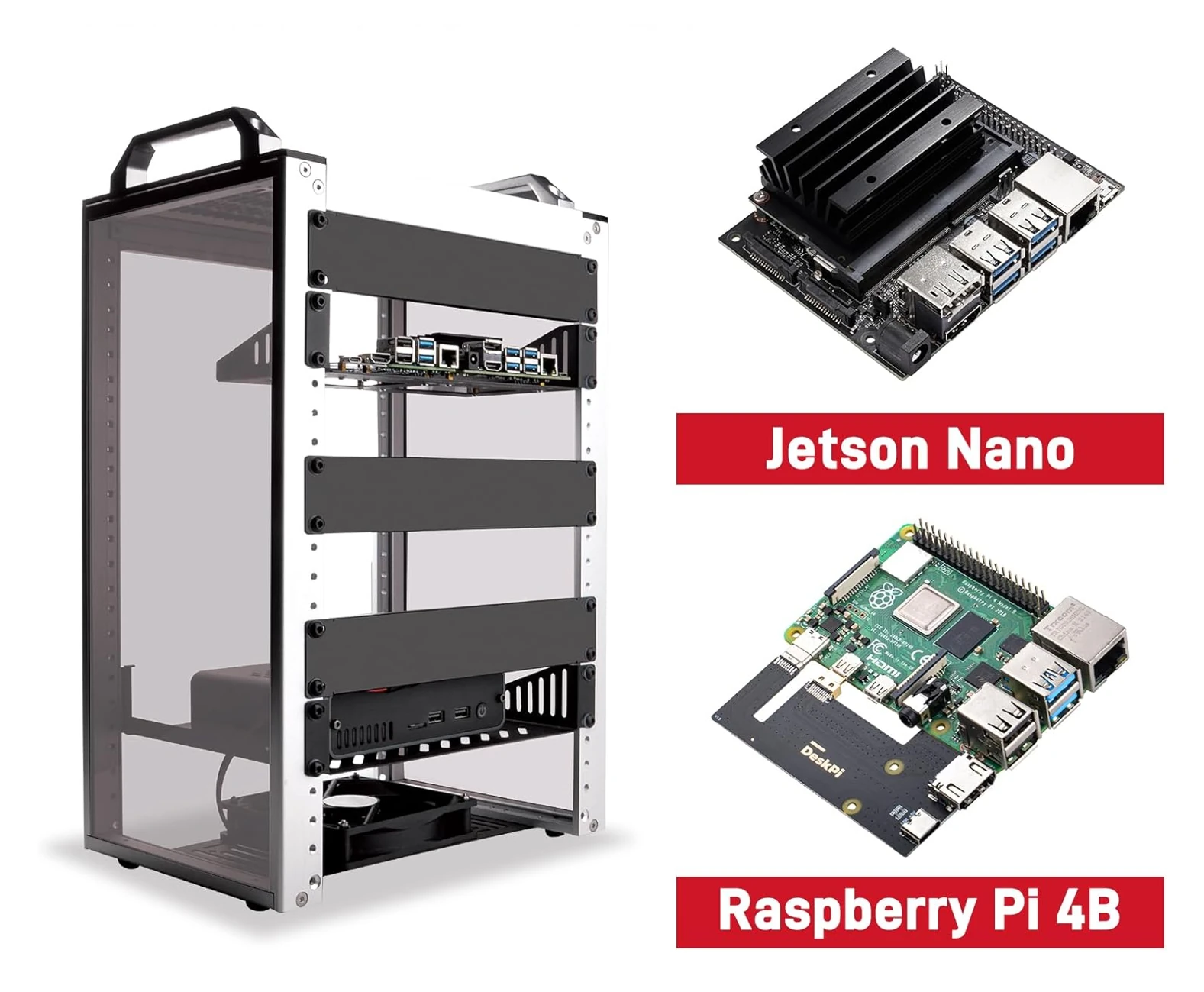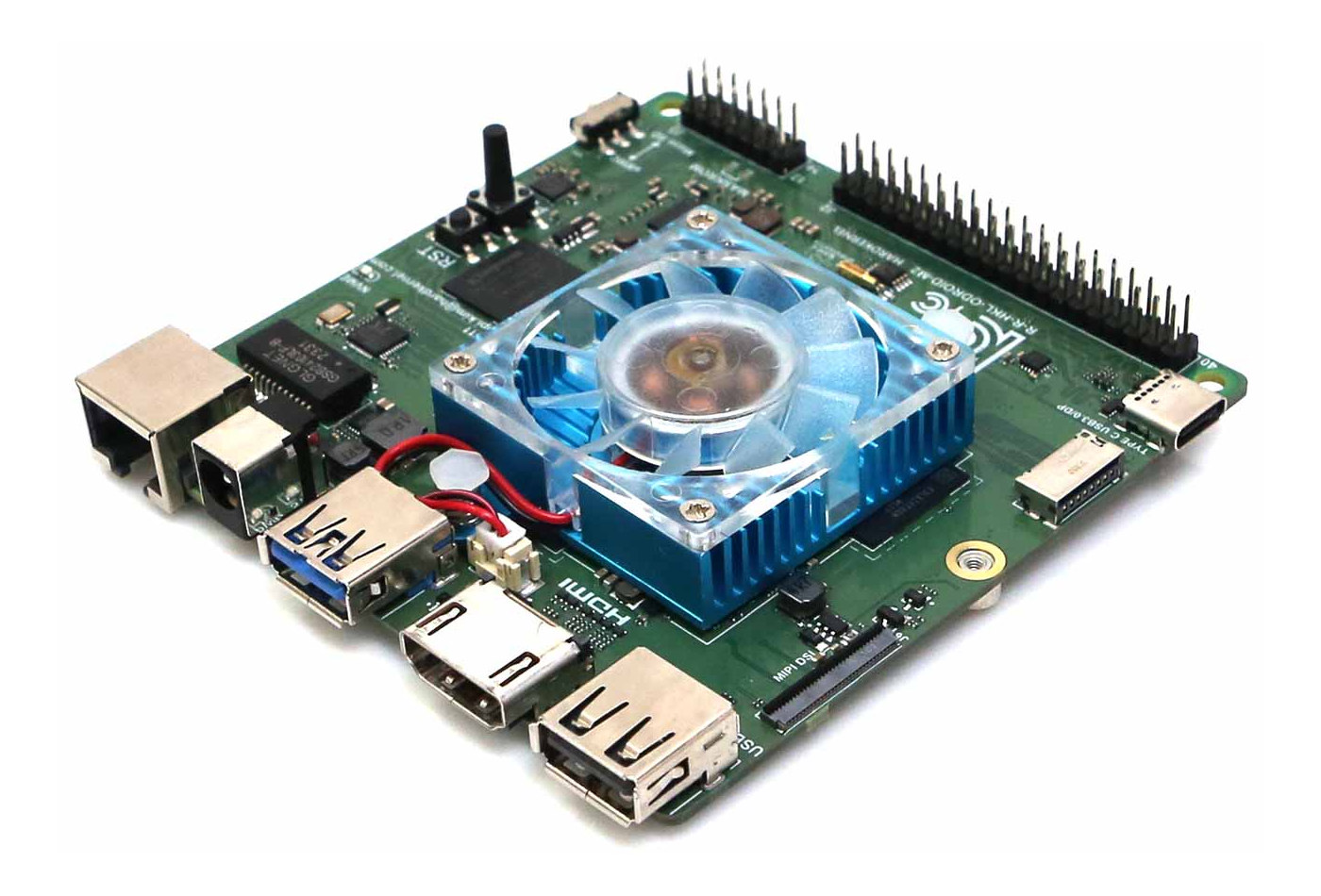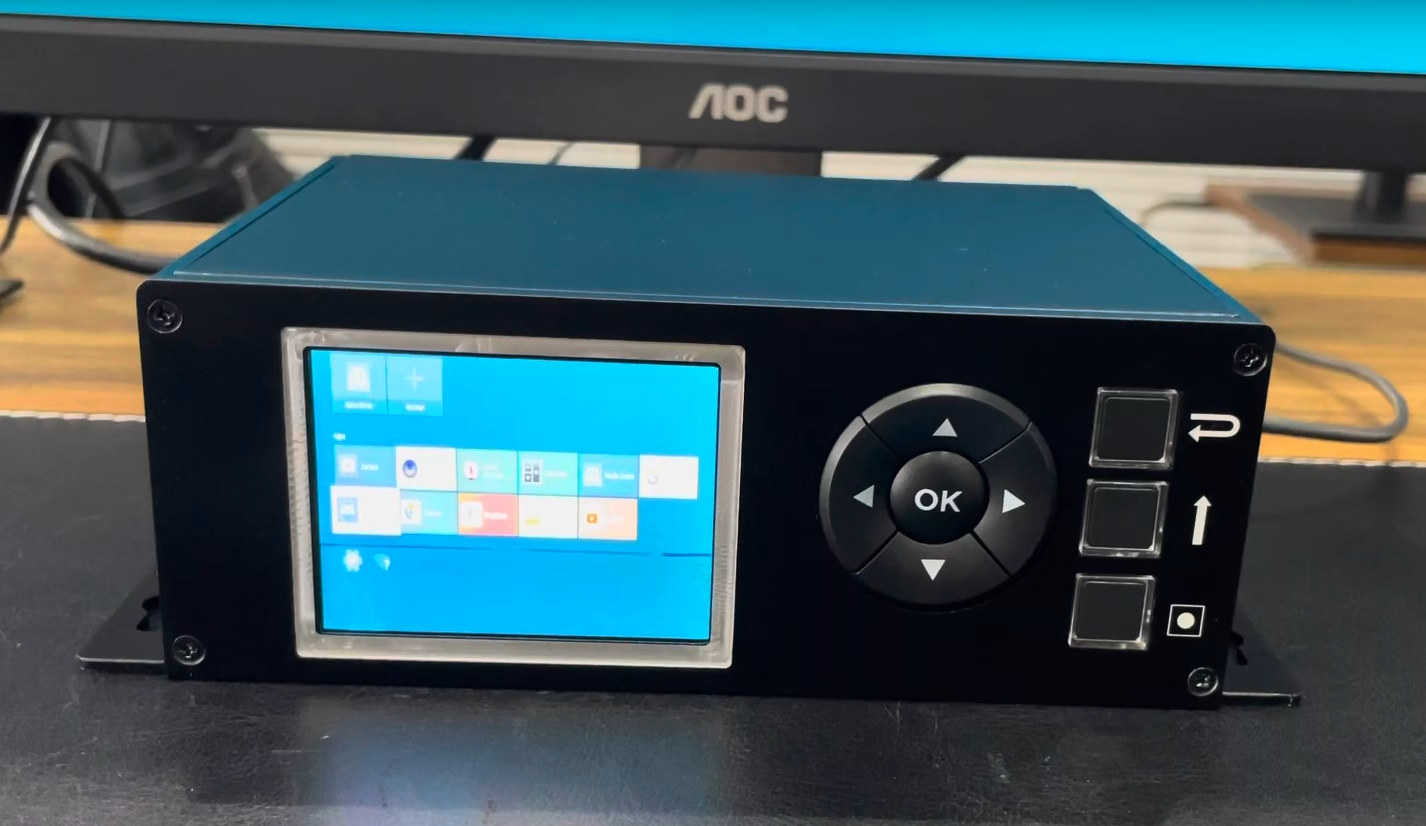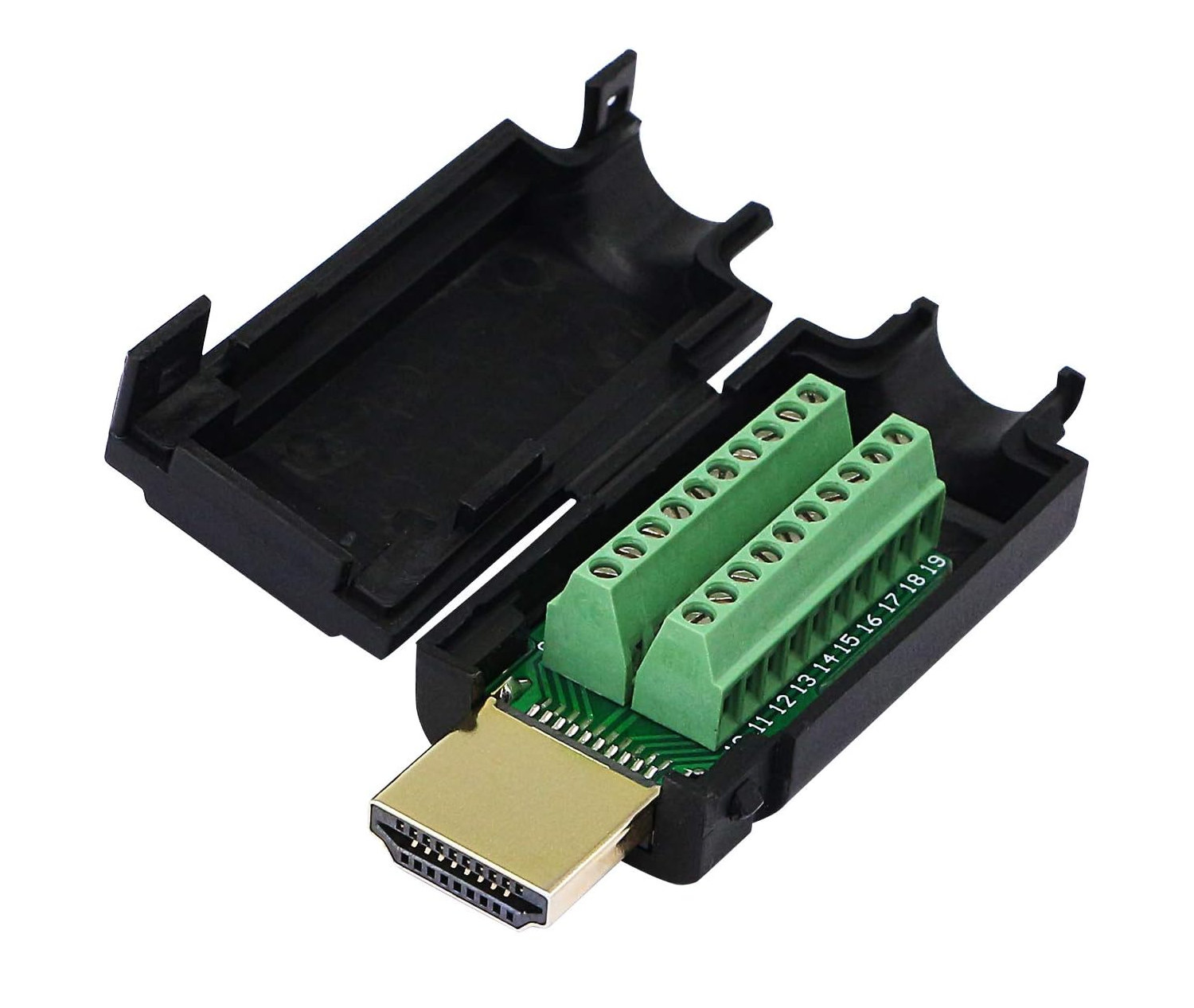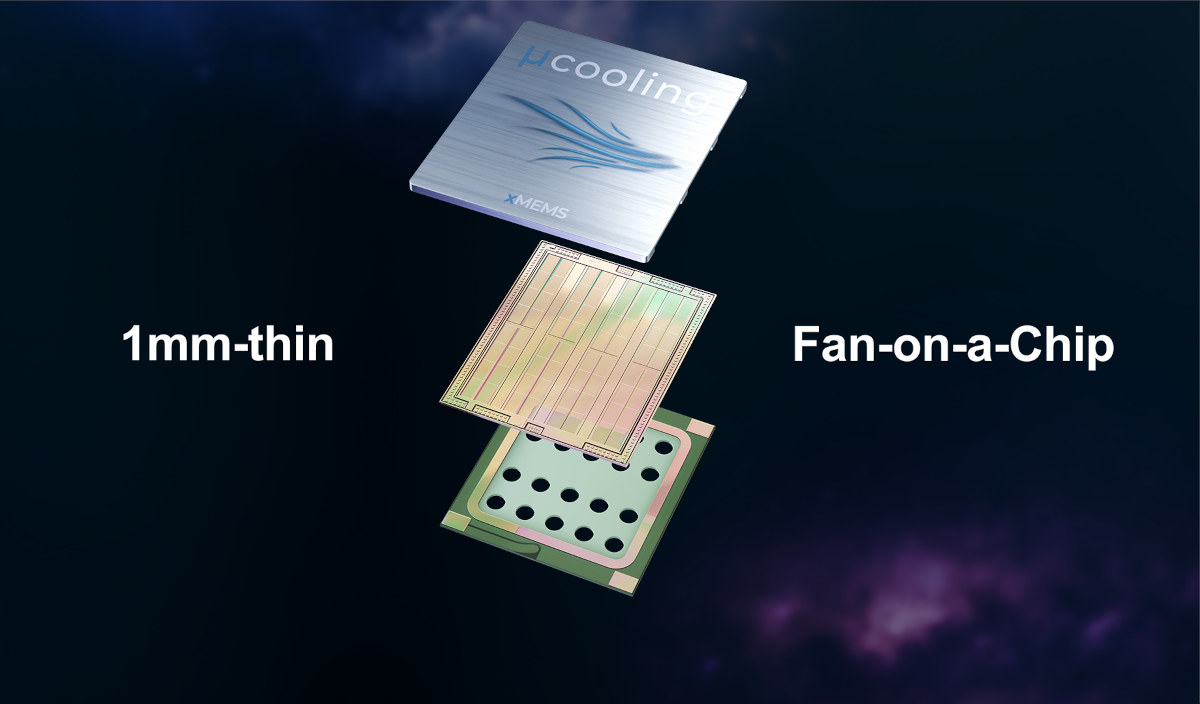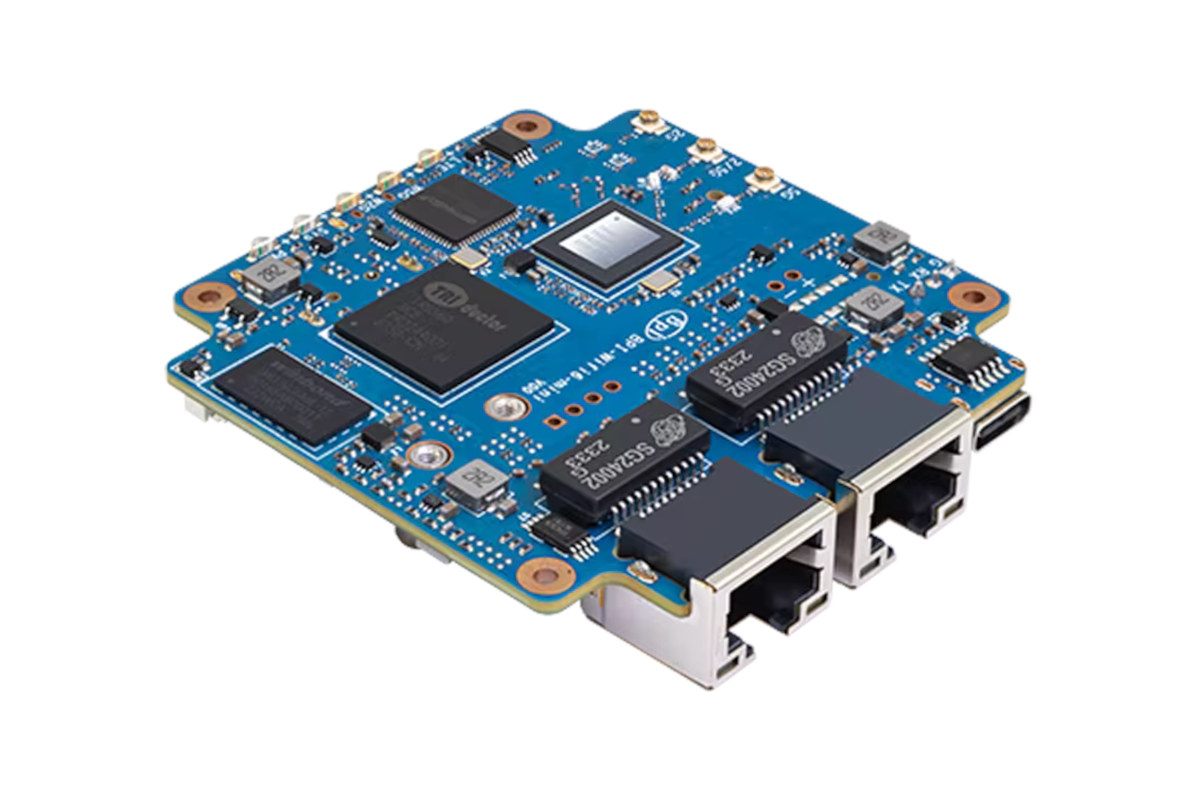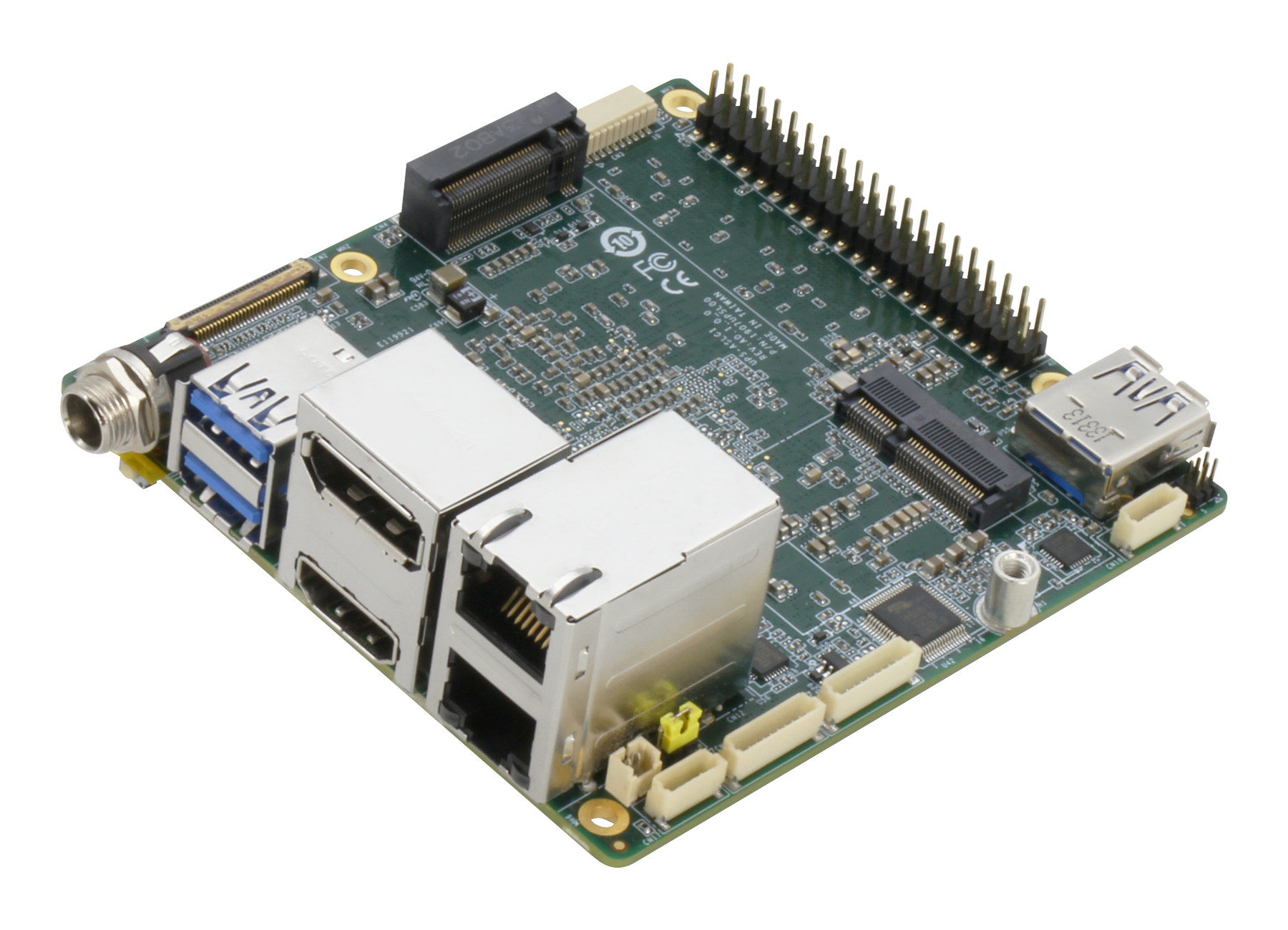DeskPi RackMate T1 is a U8 desktop rack especially suited to SBC users with support for Raspberry Pi SBCs, NVIDIA Jetson developer kits, Raxa ROCK 5B pico-ITX SBC, mini-ITX motherboards, and more. The RackMate T1 chassis is made of aluminum alloy and acrylic frame and its 8U form factor (406 (H) x 280 (L) x 200 (W) mm) allows it to be placed either on a desk or a floor of a home lab. DeskPi RackMat T1 highlights: Mounting holes on all trays Raspberry Pi 3B, 3B, +4B, and DeskPi aux board bring HDMI and USB-C to the front (M2.5 screws) – star holes NVIDIA Jetson Nano developer kit (M2.5 screws) – square holes Radxa ROCK 5B pico-ITX SBC (M3 screws) – round holes 2.5-inch drives Screw kits with M2.5 screws and standoffs, M3 screws, and a screwdriver Dimensions – 406 x 280 x 200 mm (H x L x […]
ODROID-M2 low-profile SBC features Rockchip RK3588S2 SoC, up to 16GB LPDDR5, 128GB eMMC flash
Hardkernel has just launched the ODROID-M2 low-profile SBC based on a Rockchip RK3588S2 octa-core Cortex-A76/A55 AI SoC with up to 16GB LPDDR5, 64GB eMMC flash, an M.2 PCIe socket, support for three displays through HDMI, USB-C, and MIPI DSI interfaces, gigabit Ethernet, and more. The ODROID-M2 follows the ODROID-M1 and ODROID-M1S single board computers based on respectively Rockchip RK3568 and RK3566 quad-core Cortex-A55 processors, but a significantly more powerful Rockchip RK3588S2 processor, and a larger 90x90mm form factor to accomodate for extra features and interfaces. ODROID-M2 specifications: SoC – Rockchip RK3588S2 CPU – Octa-core processor with 4x Cortex-A76 cores @ up to 2.3 GHz (+/- 0.1Ghz), 4x Cortex-A55 cores @ up to 1.8 GHz GPU – Arm Mali-G610 MP4 GPU @ 1 GHz compatible with OpenGL ES 3.2, OpenCL 2.2, and Vulkan 1.2 APIs VPU – 8Kp60 video decoder for H.265/AVS2/VP9/H.264/AV1 codecs, 8Kp30 H.265/H.264 video encoder AI accelerator – 6 […]
Mekotronics R58-4×4 3S Arm PC and digital signage player features 3-inch display, 8K HDMI output, 4x HDMI inputs
Mekotronics R58-4×4 3S is another Rockchip RK3588-based Arm PC and digital signage player from the company with unusual features such as a 3-inch display on the front panel as well as four HDMI inputs supporting up to 4Kp60 sources. The embedded PC features up to 16GB RAM and 128GB eMMC flash, an M.2 PCIe socket for NVMe storage, an 8Kp60-capable HDMI 2.1 video output port, gigabit Ethernet and WiFi 6 connectivity, a mini PCIe socket and NanoSIM card slot for a 4G LTE/GPS module, and more. Mekotronics R58-4×4 3S specifications: SoC – Rockchip RK3588 octa-core processor with CPU – 4x CortexA76 cores @ up to 2.4 GHz, 4x CortexA55 core @ 1.8 GHz GPU – Arm Mali-G610 MP4 GPU with support for OpenGL ES 1.1/2.0/3.2, OpenCL 2.2, Vulkan 1.2 Video decoder – 8Kp60 H.265, VP9, AVS2, 8Kp30 H.264 AVC/MVC, 4Kp60 AV1, 1080p60 MPEG-2/-1, VC-1, VP8 Video encoder – 8Kp30 H.265/H.264 […]
HDMI to screw terminal adapters could be useful for Raspberry Pi RP2040 and RP2350 boards
The very idea of an HDMI to screw terminal adapters maybe seem moronic at first, but in an era of programmable IOs (PIO), and high-speed serial transmit (HSTX), those could end up being useful for boards or modules based on Raspberry Pi RP2040 or RP2350 since they’ve all be shown to support DVI output through HDMI connectors. There are a few boards that integrate an HDMI port such as the Olimex RP2040-PICO-PC, Solder Party RP2xxx Stamp Carrier XL, or Adafruit Feather RP2040 among others, but most boards don’t include an HDMI port. What they do typically have are GPIO headers, and an HDMI to screw terminal adapter would allow users to easily add an HDMI port to their existing board without soldering simply by using jumper wires, or with a bit more work an old HDMI cable. All HDMI to screw terminal adapters are pretty basic with an HDMI male […]
xMEMS XMC-2400 is a 1mm-thin solid-state micro cooling fan-on-a-chip for ultrathin devices and SSDs
xMEMS Labs XMC-2400 is a vibration-free, solid-state micro cooling fan-on-a-chip that’s just 1mm thin and designed to cool the processor, other chips, and batteries on space-constraints devices such as smartphones, tablets, extended reality headsets, laptops, as well as SSDs. The XMC-2400 can deliver up to 39cc/sec airflow and up to 1,000Pa back pressure per instance while remaining inaudible and only consuming an estimated 30mW. It’s also rated IP58 for water and dust resistance. It leverages the manufacturing process the company has been using for its ultrathin MEMS speakers. xMEMS XMC-2400 specifications: Top-venting and side-venting packages for flexible integration in different system form-factors Bi-directional flow rate, adjustable up to 39cc/sec Inaudible; all mechanical operation is at ultrasonic frequencies Power consumption – 30mW (estimated) Dimensions – 9.26 x 7.6 x 1.08 mm Weight – 150 mg SMT-reflowable Ingress Protection – IP58 Two packages will be offered: XMC-2400-S – Side-Vented Package supports chip-stacking […]
$30 Banana Pi BPI-WiFi6 Mini is a dual GbE and WiFi 6 router board with optional 4G LTE or 5G cellular connectivity
Banana Pi BPI-WiFi6 Mini is an inexpensive WiFi 6 and dual Gigabit Ethernet router board with an M.2 Key-B socket and Nano SIM card slot to add 4G LTE or 5G cellular connectivity. It’s a smaller version of the Banana Pi BPI-WiFi 6 router board based on the Triductor TR6560 dual-core Arm Cortex-A9 processor and Triductor TR5220 WiFi 6 chipset that follows the form factor of the Banana BPI-R3 Mini low-profile router board based on MediaTek Filogic 830 processor. Banana Pi BPI-WiFi6 Mini specifications: SoC – Triductor TR6560 dual-core Arm Cortex-A9 processor @ 1.2 GHz with LSW (Line-Card Switching) and hardware NAT up to 5 Gbps WiFi chipset – Triductor TR5220 WiFi 6 chipset System Memory – 128MB DDR3 Storage – 128MB SPI NAND flash Networking 2x Gigabit Ethernet RJ45 ports WiFi WiFi 6 with 2×2 MIMO @ 2.4 GHz, 2×2 MIMO @ 5GHz Antennas – 2.4GHz antenna connector, 2.4GHz/5GHz […]
UP Squared 7100 Alder Lake-N fanless SBC ships with up to 16GB LPDDR5 and 128GB eMMC flash
AAEON has just introduced the UP Squared 7100 fanless single board computer powered by Intel Processor N-series CPUs (N97 or N100 by default) with up to 16GB LPDDR5 and 128GB eMMC flash in a compact 90 x 85.6mm form factor. The SBC can drive up to three independent 4K displays at 60 Hz, features two RS232/422/485 interfaces, gigabit Ethernet, three USB 3.2 ports, and expansion options that include a 40-pin GPIO header, and two M.2 sockets for NVMe storage and WiFi/Bluetooth connectivity. UP Squared 7100 specifications: Alder Lake-N SoC (one or the other) Default options Intel Processor N100 quad-core processor up to 3.4 GHz with 6MB cache, 24EU Intel UHD Graphics Gen 12 @ 750 MHz; TDP: 6W Intel Processor N97 quad-core processor up to 3.6 GHz with 6MB cache, 24EU Intel UHD Graphics Gen 12 @ 1.2 GHz; TDP: 12W Additional options upon request Intel Core i3-N305 octa-core processor […]
NanoPi M6 – A Rockchip RK3588S SBC and fanless HMI solution with an integrated 3.5-inch touchscreen display
NanoPi M6 is a Rockchip RK3588S SBC (single board computer) that is also offered as a complete fanless HMI solution with a metal case and a 3.5-inch capacitive touchscreen display with 800×480 resolution. The M6 is offered with 4GB to 32GB LPDDR5 memory, supports microSD, eMMC flash module, and M.2 NVMe SSD bootable storage, features one HDMI 2.1 port, two MIPI DSI connectors, two MIPI CSI camera connectors, gigabit Ethernet, an M.2 E-Key socket for WiFi and Bluetooth, and a 30-pin GPIO header for expansion among a few other ports and features. NanoPi M6 specifications: SoC – Rockchip RK3588S CPU – Octa-core processor with 4x Cortex-A76 cores @ up to 2.4 GHz, 4x Cortex-A55 cores @ up to 1.8 GHz GPU – Arm Mali-G610 MP4 GPU compatible with OpenGL ES 3.2, OpenCL 2.2, and Vulkan 1.2 APIs VPU – 8Kp60 video decoder for H.265/AVS2/VP9/H.264/AV1 codecs, 8Kp30 H.265/H.264 video encoder AI […]


